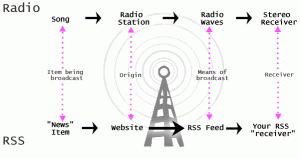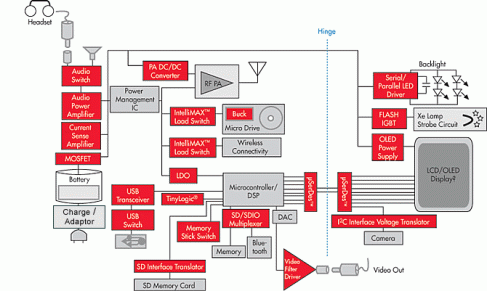Products Category
- FM Transmitter
- 0-50w 50w-1000w 2kw-10kw 10kw+
- TV Transmitter
- 0-50w 50-1kw 2kw-10kw
- FM Antenna
- TV Antenna
- Antenna Accessory
- Cable Connector Power Splitter Dummy Load
- RF Transistor
- Power Supply
- Audio Equipments
- DTV Front End Equipment
- Link System
- STL system Microwave Link system
- FM Radio
- Power Meter
- Other Products
- Special for Coronavirus
Products Tags
Fmuser Sites
- es.fmuser.net
- it.fmuser.net
- fr.fmuser.net
- de.fmuser.net
- af.fmuser.net ->Afrikaans
- sq.fmuser.net ->Albanian
- ar.fmuser.net ->Arabic
- hy.fmuser.net ->Armenian
- az.fmuser.net ->Azerbaijani
- eu.fmuser.net ->Basque
- be.fmuser.net ->Belarusian
- bg.fmuser.net ->Bulgarian
- ca.fmuser.net ->Catalan
- zh-CN.fmuser.net ->Chinese (Simplified)
- zh-TW.fmuser.net ->Chinese (Traditional)
- hr.fmuser.net ->Croatian
- cs.fmuser.net ->Czech
- da.fmuser.net ->Danish
- nl.fmuser.net ->Dutch
- et.fmuser.net ->Estonian
- tl.fmuser.net ->Filipino
- fi.fmuser.net ->Finnish
- fr.fmuser.net ->French
- gl.fmuser.net ->Galician
- ka.fmuser.net ->Georgian
- de.fmuser.net ->German
- el.fmuser.net ->Greek
- ht.fmuser.net ->Haitian Creole
- iw.fmuser.net ->Hebrew
- hi.fmuser.net ->Hindi
- hu.fmuser.net ->Hungarian
- is.fmuser.net ->Icelandic
- id.fmuser.net ->Indonesian
- ga.fmuser.net ->Irish
- it.fmuser.net ->Italian
- ja.fmuser.net ->Japanese
- ko.fmuser.net ->Korean
- lv.fmuser.net ->Latvian
- lt.fmuser.net ->Lithuanian
- mk.fmuser.net ->Macedonian
- ms.fmuser.net ->Malay
- mt.fmuser.net ->Maltese
- no.fmuser.net ->Norwegian
- fa.fmuser.net ->Persian
- pl.fmuser.net ->Polish
- pt.fmuser.net ->Portuguese
- ro.fmuser.net ->Romanian
- ru.fmuser.net ->Russian
- sr.fmuser.net ->Serbian
- sk.fmuser.net ->Slovak
- sl.fmuser.net ->Slovenian
- es.fmuser.net ->Spanish
- sw.fmuser.net ->Swahili
- sv.fmuser.net ->Swedish
- th.fmuser.net ->Thai
- tr.fmuser.net ->Turkish
- uk.fmuser.net ->Ukrainian
- ur.fmuser.net ->Urdu
- vi.fmuser.net ->Vietnamese
- cy.fmuser.net ->Welsh
- yi.fmuser.net ->Yiddish
The Process of Radio Signals Transmission
Cell phones are very complex and advanced technological devices. Researchers and engineers have spent decades trying to understand the fundamentals of what is required to make mobile calls. In present times it seems that cell phones or smart phones are just about everywhere. Many people take this type of technology for granted and do not understand the amount of work and effort that is needed in order to make wireless phone calls possible.
Due to the abundance of cell phones in society today, it is easy to see why people may overlook the advancements and innovation that takes place every time you make a portable phone call. “It is estimated that there are over five billion cell phones currently is use.” (Steuernagel 63) However, with such a large amount of people using this rather new technology, majority of them have no idea how they operate.
According to research, cell phones are most similar to the technology that a radio requires in order to function. A cell phones foundation is based on the radios ability to receive radio signals. In order for a radio to play your favorite music station or perhaps broadcasting of the baseball game, it is necessary for the radio to absorb the information that is relayed to the audience as entertainment.
If you ask yourself how does the radio emit the announcers voice at Yankee Stadium through its speakers, you may understand that something needs to go “in” the radio in order for your music to come “out”.
Try to think of it like this…When you tell someone a secret, you are both able to hear each others voices and comprehend each other because you both understand the same language. Bear with me, since you understand each others language or “signal” there is no need for a translation step. If you think of the radio as someone who understands a different language, you will understand that there is a translation step to turn the air waves/radio waves into musical entertainment.
The radio performs the necessary translation step to turn incomprehensible air waves into musical enjoyment for our ears. What goes in the radio are called “radio waves”, it is then up to your radio device to absorb these radio waves and turn them into usable sound. The antenna, or radio antenna, is what captures these radio signals and transfers them into the sounds you hear coming out of your speaker.

(Above) this image shows the transmission of radio waves from a tower to a radio, from a radio station. Your cell phone has a radio that operates in this very function, understanding this will help clarify how your cell phone functions. So what keeps the radio waves form colliding with one another? If you take this concept and try to apply it to a cell phone, it is no different. The radio signals go both ways and can emit signals as well as receive them, thus you can call someone and they can call you.
This starts to shape the way a cell phone works. Cellular phones also have a similar antenna that captures, absorbs, and translates the waves into usable sound. “When a mobile phone transmits audio, it applies an oscillating electric current to the mobile phone antenna.” In return, the antenna emits “corresponding electromagnetic waves”.
Think of it like a game of Simon Says, you can’t do anything until you are told to do so, so you must wait for the proper commands before you can act, everything must be compatible. If you think of cell phones emitting radio waves, the waves are compatible with one another, and work based off of each others actions, thus you call your friend and the radio waves coincide and enables you to communicate nation wide portably.
The name “cell phone” stems from the basic layout of the entire cell phone existence. Modern cell phones work from small cells that are actually responsible for majority of your cellular needs. If you remember from science class, radio waves come in a various arraignment. They also have different unique frequencies. “Each cell is also assigned a number of frequencies which correspond to the radio base stations” (Steuernagel 57) This helps keep all of the radio waves together with the other end of the phone conversation. “This ability to reuse frequencies is the key to the cellular network’s power.”

If you are curious and observant like me, you may have noticed that on the batteries of your cell phone or somewhere else on the phone that may be frequently scene, it is inscribed with the following letters: CDMA or TDMA. CDMA stands for Code Division Multiple Access, TDMA is Time Division Multiple Access. These acronyms are vital to the operation of the cell phone.
These very scientific complex codes represent the cellular devices ability to translate the signals into usable information or music, sound. If you ever had a SIM card in your phone, you were using GSM, which is Global System for Communications. You were using a SIM card which acts like a car engine, and it basically was the brain behind the translation of information to be received on your cell phone. CDMA does not use a SIM card or removable disk, instead the phones translates the signals permanently in the memory.


this diagram is a very elementary way of understanding how the cell phone works.
The diagram above depicts a modern network of cellular technology. As you can see from this model, there is quite a lot more of action going on here, way more in’s and out’s and circuit paths.

